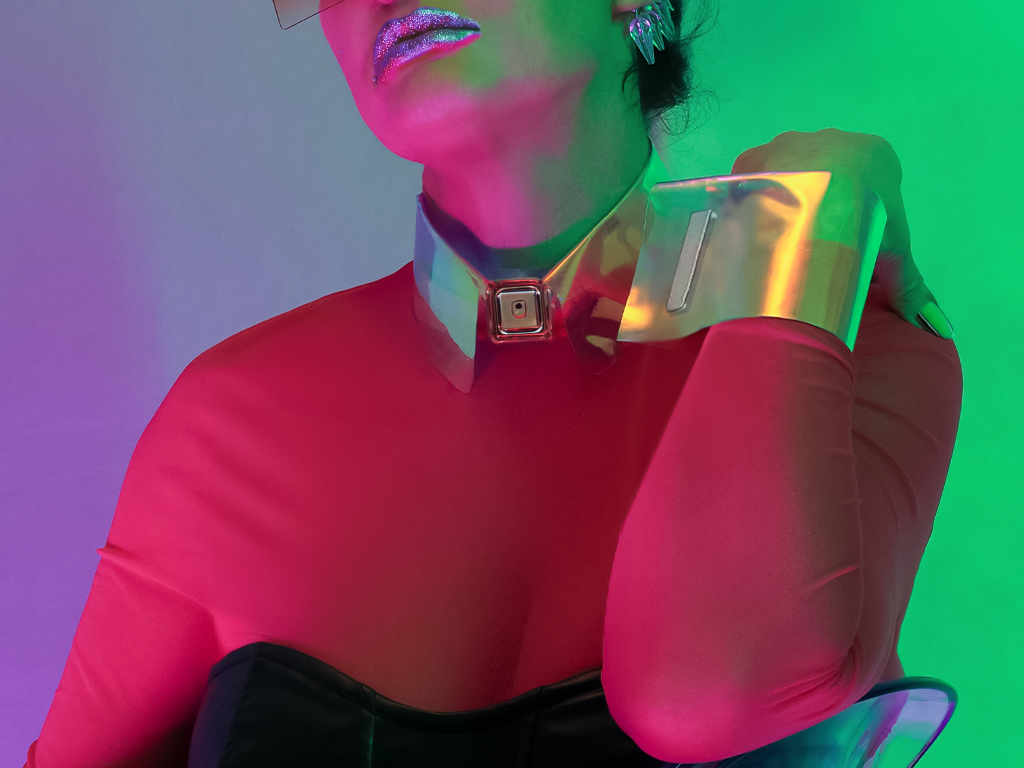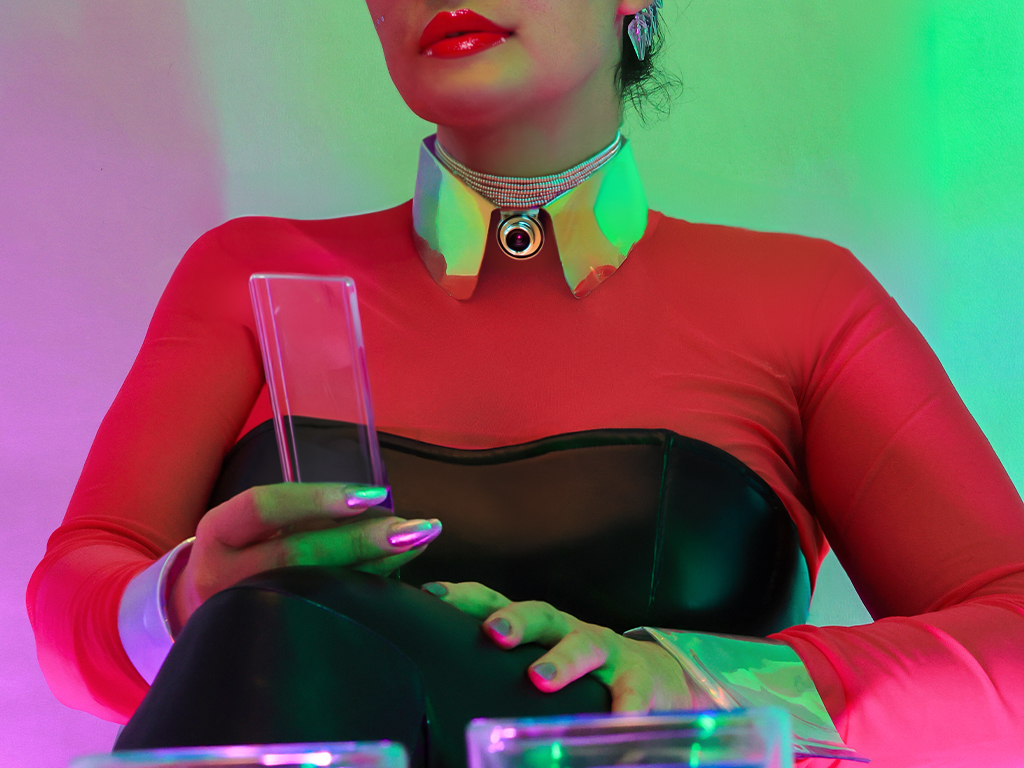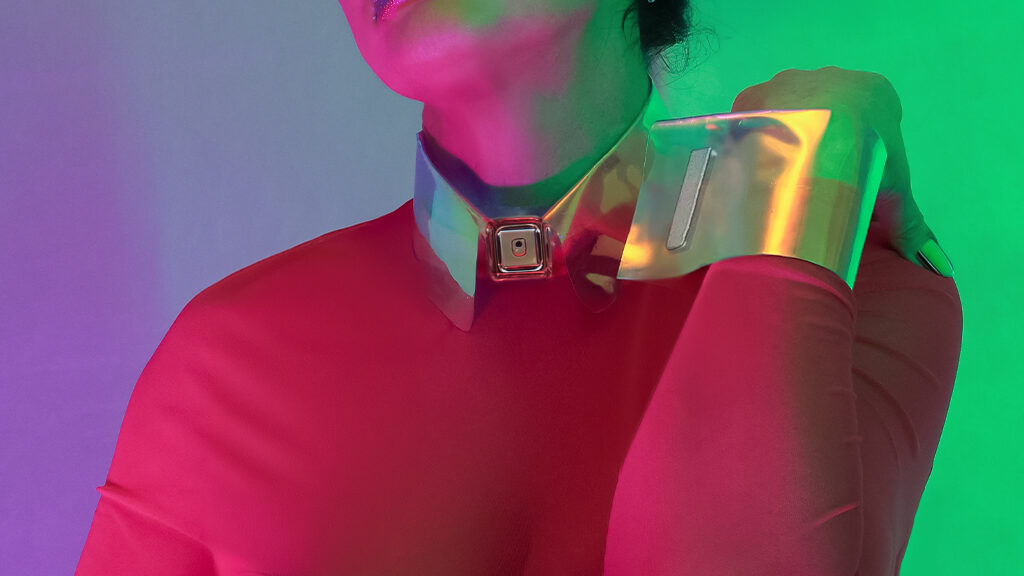The beginning of the trend to wear “corpo collars” has its roots in the requirement introduced by American and European corporations into women’s dress codes. As the futures movement grew, more and more daring “anarchic” elements appeared in employees’ clothing. This happened all the more easily as asymmetrical jackets and blouses, mesh tops, clearances, scarves and low hoods covering the face, and even masks a la futu became widespread on the streets of cities around the world. Thus, by the turn of the century, lower-level corporate employees were adopting elements of what were then known as the “street hoodie” and “urban futu” trends.
Corporate authorities initially ignored this infiltration of fashion into their offices, but eventually someone decided that clothing could be followed by a tribute to the futu ideology. This, of course, was unacceptable, so corpos began to fight back with clothing inspired by the anarchist-hacker subculture of the futu. Gradually, a rigid and formal dress code was introduced into the corporation, excluding items associated with the futu movement. Following the principle that for every action there is an equal and opposite reaction, this had the opposite effect.


Pressure on corporate employees to come to work dressed “correctly” and according to company policy has met with surprisingly strong resistance. After waves of social media protests, hundreds of street demonstrations, thousands of strikes and office blockades, and, most importantly, many lost lawsuits, most corporate managers caved.
Corporations won concessions on only two issues. First, it became a generally accepted norm that clothing exposing breasts and chests should be avoided at work. Second, clothing could be any color, texture, and cut, but it had to have a collar. Thus, the collar became a symbol of the company. Over time, there was a caricatured adherence to this requirement in the form of wearing a separate collar, usually for women, accompanied by separate wide cuffs fastened with pins. This corpo collar style as a separate accessory was taken up by creatives, i.e. freelancers and creatives from the big cities. Then it spread to the streets until it finally found its way to stylists and the circles of the richest. A big fan of corpo collars, for example, was Ava Canberry.

Seasonal collections of haute urban chic clothing began to emerge, with collars and cuffs as must-have items. For several years now, fashion houses have been releasing new lines of collars and cuffs at least four times a year.
The copro collar fashion has even made its way to the holobots – for example, the female phantoms at WISE headquarters had no rendered closet, except for collars and cuffs with holding company logos.
.


